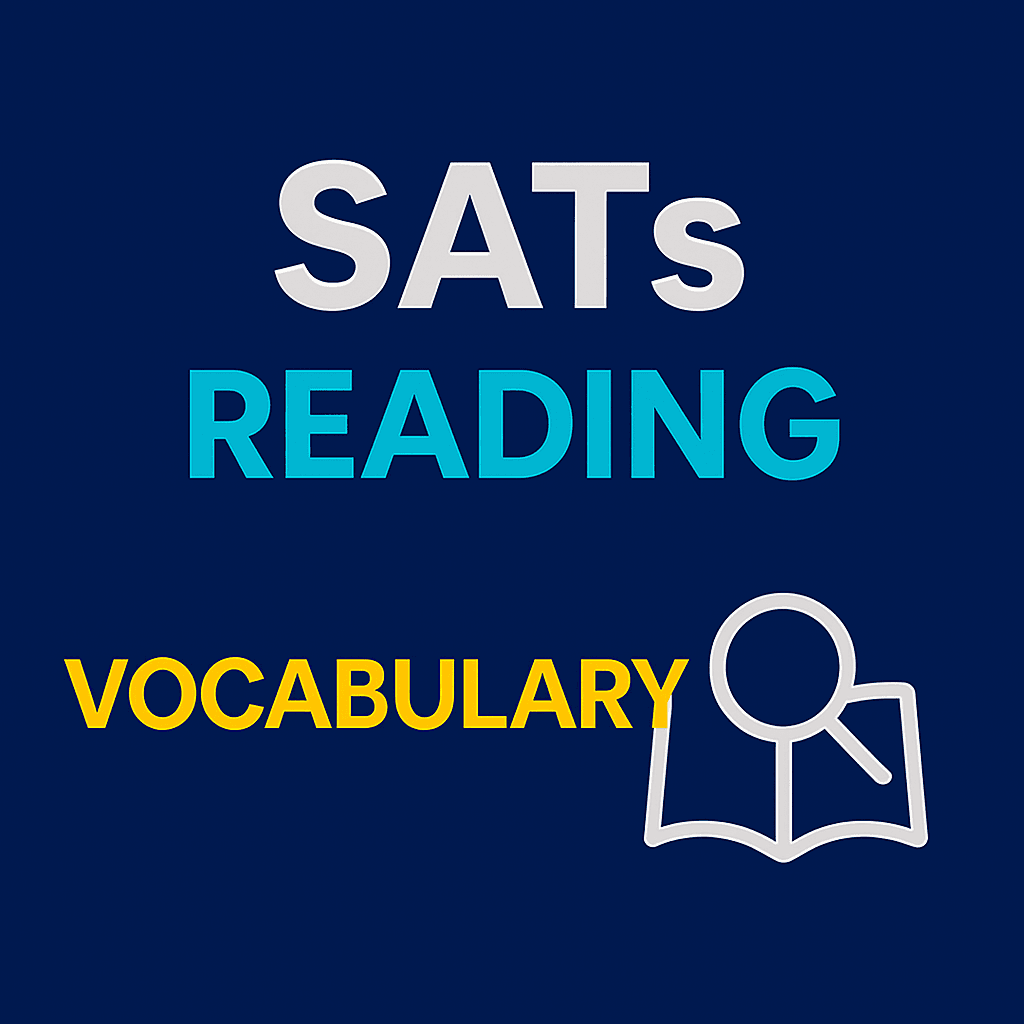Table of Contents
ToggleMastering SAT Vocabulary in Context: Key Strategies for Success
Introduction
The SAT Reading section tests your ability to determine the meaning of words based on context, not memorization. Vocabulary in context questions require you to analyze how a word is used in a sentence and infer its meaning through clues in the passage.
The good news? You don’t need to learn a massive word list. Instead, mastering strategies like recognizing context clues, substituting synonyms, and breaking down words can help you answer these questions accurately.
This guide will teach you:
- How to approach vocabulary in context questions.
- Effective techniques for decoding word meanings.
- Practice examples to boost confidence and accuracy.
What Are Vocabulary in Context Questions?
Vocabulary in context questions ask:
“What does this word most nearly mean in the passage?”
The correct answer depends on how the word is used—not just its dictionary definition.
Example Question:
In line 12, the word “demanding” most nearly means:
A. difficult
B. requiring
C. asking politely
D. offering strongly
Here, the correct answer depends on the passage’s context.
- Types of Context Clues to Look For
Restatement or Definition Clues
The sentence explains the word’s meaning.
Example:
The terrain was arid, or extremely dry, making farming nearly impossible.
- Clue: “or extremely dry” restates “arid.”
- Answer: Dry.
- Example Clues
The author provides examples to clarify the word.
Example:
Large carnivores, such as lions, tigers, and wolves, rely on meat for survival.
- Clue: The examples “lions” and “tigers” clarify “carnivores.”
- Answer: Meat-eating animals.
Contrast Clues
The sentence includes contrasting ideas (using words like but, however, or unlike).
Example:
Unlike the vibrant flowers, the leaves were dull and lifeless.
- Clue: The word “unlike” signals a contrast between “vibrant” and “lifeless.”
- Answer: Dull, lacking energy.
Cause and Effect Clues
The sentence shows how one event leads to another.
Example:
The storm caused the stream to swell, and the water soon became turbulent, flooding nearby roads.
- Clue: The flooding shows the water was rough or agitated.
- Answer: Rough, choppy.
Strategies to Answer Vocabulary in Context Questions
Step 1: Read the Sentence Carefully
- Focus on the sentence containing the word and read 1–2 sentences before and after for context.
Step 2: Look for Context Clues
- Use restatement, contrast, examples, or cause and effect to narrow down the meaning.
Step 3: Substitute Each Answer Choice
- Replace the word with each answer choice to see which one fits naturally into the sentence.
Step 4: Eliminate Wrong Answers
- Cross out choices that don’t fit the context or change the meaning of the sentence.
- Practice Examples
Example 1: Restatement Clue
Passage:
“The professor was elated, or overjoyed, when her research was published in a prestigious journal.”
Question: In this sentence, the word “elated” most nearly means:
A. happy
B. confident
C. nervous
D. quiet
Solution:
- Clue: “or overjoyed” directly restates “elated.”
- Correct Answer: A. happy.
Example 2: Contrast Clue
Passage:
“While the team’s performance was lackluster, the coach remained hopeful for improvement.”
Question: In this sentence, the word “lackluster” most nearly means:
A. impressive
B. dull
C. exciting
D. unpredictable
Solution:
- Clue: The contrast word “while” suggests a negative tone for “lackluster.”
- Correct Answer: B. dull.
Example 3: Cause and Effect Clue
Passage:
“After hours of hiking through rough terrain, the group was completely exhausted.”
Question: In this sentence, the word “exhausted” most nearly means:
A. tired
B. excited
C. energized
D. refreshed
Solution:
- Clue: Hiking through rough terrain causes fatigue.
- Correct Answer: A. tired.
Common Mistakes to Avoid
- Relying on Prior Knowledge:
- Don’t assume a word’s meaning. Focus on how the author uses it in context.
- Choosing Extreme Answers:
- Avoid answers that are overly positive or negative unless the passage supports it.
- Ignoring Context Clues:
- Read the surrounding sentences carefully for hints.
- Quick Tips to Improve Vocabulary for the SAT
- Read Widely:
- Practice reading science articles, fiction, and historical texts. This exposes you to diverse vocabulary.
- Annotate:
- While reading, underline unfamiliar words and guess their meanings using context clues.
- Practice with Flashcards:
- Use apps like Quizlet to review common SAT words in context.
- Take Practice Tests:
- Regular practice helps you identify question patterns and apply strategies effectively.
Summary
Mastering vocabulary in context questions for the SAT doesn’t require memorizing endless word lists. Instead, focus on recognizing context clues, substituting synonyms, and eliminating incorrect answers. With consistent practice, you’ll develop the confidence to tackle these questions quickly and accurately.
📅 Book Your Free SAT Reading Consultation Today!
Skinat Tuition | Building Confidence, Inspiring Excellence Globally.


